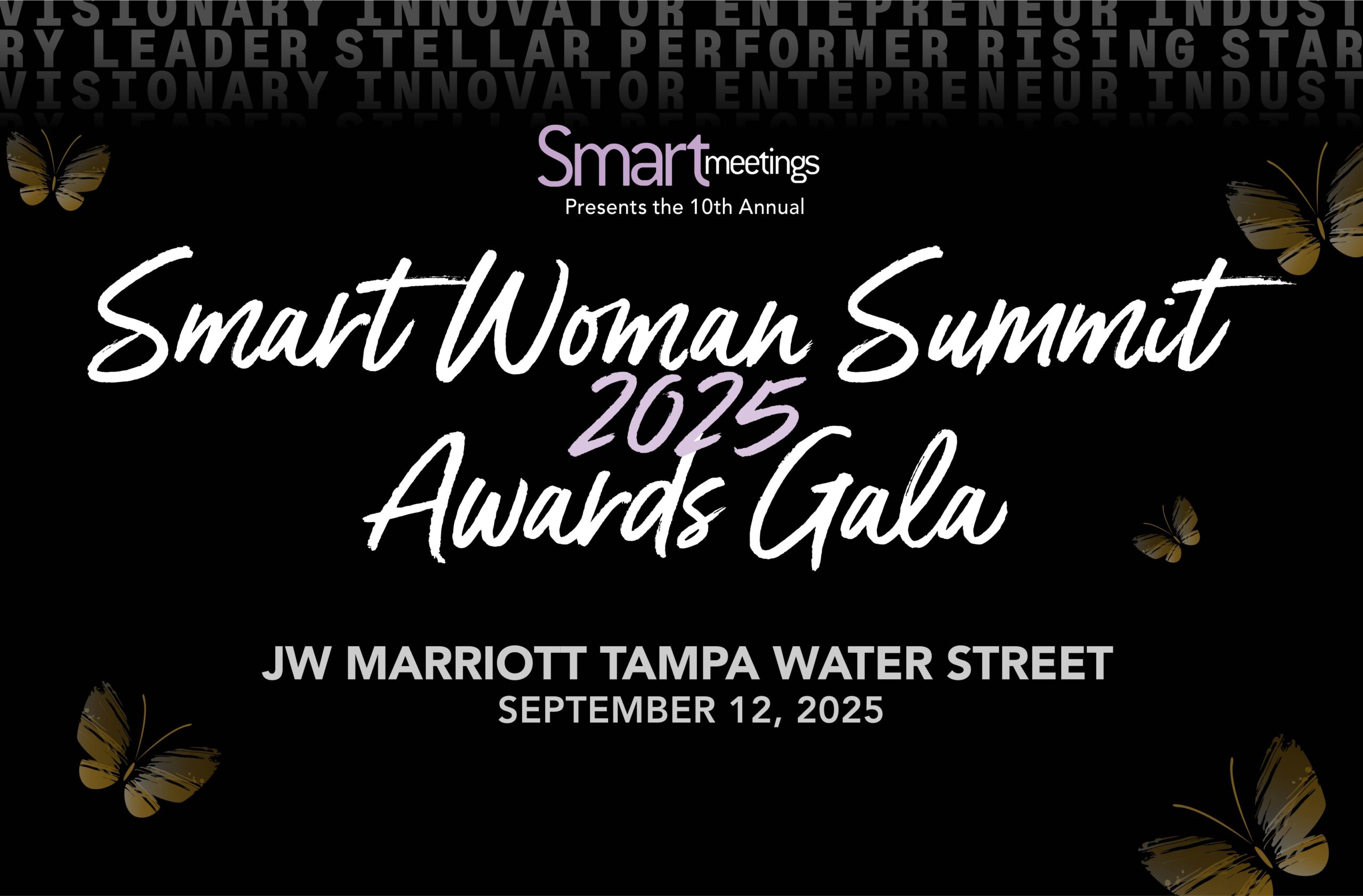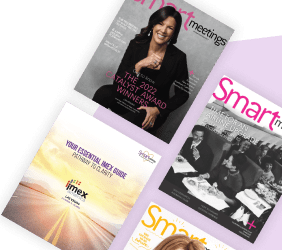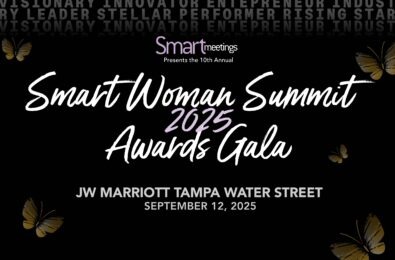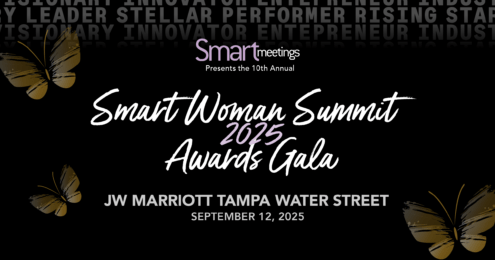The transformational leader we needed
ASAE CEO Michelle Mason started her journey in the association world with a temporary staff assistant role at the Chemical Manufacturers Association—now the American Chemistry Council. She served as President and CEO of Association Forum and was adjunct faculty at Mount Mary University.
Along the way she supported diverse teams and built organizational excellence. She is the ultimate collaborator, visionary and leaders. It is with great pleasure we award her the 2025 Marin Bright Legacy Award and share her story.
How did you catch the association bug?
I had no idea when I started at Chemical Manufacturers Association just how much this field would shape my career and my life but I quickly became determined to pursue an executive leadership role in this industry.
What drew me in—and what continues to inspire me—is the power of associations to bring people together. We are the glue that connects industries and professions, fosters relationships and tackles big challenges. That sense of purpose and community is what makes our work so meaningful.
Over the years, I’ve had the privilege of working with small, medium and large associations—at the state, national and global levels. I’ve worn just about every hat in an association. Those experiences have given me a deep appreciation for the people who make associations work at every level.
Read More: Smart Chat: Michelle Mason on the Next Big Idea
As president and CEO of ASAE, I carry that perspective with me, ensuring that we support and empower our members no matter where they are in their journey.
That commitment to supporting professionals at every stage of their journey is why ASAE is actively advocating for policies that expand access to education and career development opportunities.
One key example is our support for the Freedom to Invest in Tomorrow’s Workforce Act, which would allow 529 savings plans to cover postsecondary training and credentialing offered by associations. This legislation recognizes that career advancement isn’t limited to traditional degree programs—many workers rely on industry certifications and professional development programs to grow, pivot, or re-enter the workforce. Expanding access to these resources would provide more people with the tools they need to succeed in an evolving job market.
You started at a pivotal point in ASAE’s evolution after the passing of longtime leader John Graham and in the midst of Covid. What are you most proud of accomplishing so far?
Stepping into the role of ASAE’s president and CEO was a pivotal moment—not just for me, but for ASAE’s 105-year history. And while I don’t say this lightly, I truly believed I was the right leader at the right time. ASAE is more than just an organization—it’s the professional home for association executives and the voice of our industry. Our community deserves a world-class home that listens, adapts and delivers real value. That’s what we strive to create every day.
When I came on board in 2021, ASAE was in transition, like so many associations, redefining its business model and strategic focus in the wake of the pandemic. I knew we had to move quickly. I wanted our community to feel the shift—to know that change was underway and that ASAE was evolving to meet their needs. Culture matters and I was determined to foster an environment where collaboration, innovation and responsiveness were at the forefront.
The ASAE Board had already laid the foundation with a three-year strategic framework, but strategy isn’t static. Our members’ needs are constantly evolving, and we knew that ASAE must be agile in response. Revisiting our strategic framework led to the development of Destination 2026, where we sought to fill in the gaps in our strategy by focusing on four pillars: create member value, foster workforce development, elevate associations and enhance our culture and infrastructure. And in our current fiscal year, we’ve expanded our strategy again to include a focus on artificial intelligence (AI), Conscious Inclusion, strategic leadership and workforce development.
While ASAE’s portfolio of products and services has been greatly enhanced since I arrived, I would say what I’m most proud of is the cultural transformation. The energy, the sense of community and the collaborative spirit within ASAE today are tangible. That’s a testament to our incredible staff and the dedicated volunteer leaders who drive our success. Together, we’re ensuring that ASAE remains the trusted home for association professionals—today and into the future.
How are you helping the industry move forward during uncertain times?
ASAE is here to help our community navigate an evolving landscape—identifying both risks and opportunities—and ensuring that, wherever possible, associations have a seat at the table rather than finding themselves on the menu.
In addition to legislative challenges, associations must also stay ahead of shifting regulatory policies. The administration has issued a number of executive orders and ASAE has been closely analyzing their implications. Our goal is to break down these complex policies into clear, actionable insights, helping associations understand how new directives may impact their operations, advocacy efforts and the industries they serve. Being informed and prepared is critical to adapting and responding effectively.
This is a pivotal moment for associations, particularly with major tax reform on the horizon. The stakes couldn’t be higher. The expiration of key provisions from the 2017 Tax Cuts and Jobs Act in 2025 means Congress will be making major decisions that could directly impact the financial health and sustainability of associations.
That’s why ASAE is leading the Community Impact Coalition—to ensure tax-exempt organizations don’t get caught in the crossfire as lawmakers seek ways to offset the cost of this massive tax package. Some proposals on the table could impose a sweeping 21% corporate tax rate on all non-donation net revenue, affecting membership dues, sponsorships, investment income and revenue from educational programs. The consequences would be devastating, threatening the very missions that associations and other tax-exempt entities fulfill every day.
We’ve been preparing for this fight and we’re making sure policymakers understand what’s at stake. Associations drive economic growth, support workforce development and provide critical community services across the country. Now, more than ever, we must raise our collective voice and make it clear: taxing associations like corporations would do more harm than good. ASAE is committed to leading this charge—but we need the entire community to stand with us.
What has been the one thing that has helped you to be so successful?
The key to my success has been a leadership philosophy grounded in service, accountability and a deep commitment to the association community.
Servant Leadership has been my guiding principle. I believe that leadership starts with listening—truly understanding the needs, challenges and aspirations of those we serve. By fostering responsiveness and ensuring that our work aligns with the evolving needs of our members, I strive to create an organization that is not only effective but also deeply connected to its community.
Read More: Dear Female Leaders, Stop Struggling and Start Succeeding
I also believe that feedback is a gift. No organization or leader can grow without honest input and I welcome all perspectives as opportunities for learning and improvement. Whether it’s from staff, members or industry partners, I see feedback as a way to refine our strategies, strengthen our impact, and build a culture of continuous learning.
Above all, I never lose sight of ASAE’s responsibility to its members. Associations exist to serve their members, and ASAE exists to help association leaders succeed. Everything we do is designed to ensure our members have the knowledge, resources, and community they need to thrive.
Who have your role models and champions been?
While I’ve had many mentors and champions throughout my career, I consider the broader association community to be my greatest teacher. Every day, I’m learning, growing and becoming a better leader because of the people around me. That’s the power of associations and it’s why I’m so passionate about the work we do.
“If the work I’ve done has helped associations be more resilient, more innovative and more indispensable to the world, then that’s a legacy worth striving for.”
I find association leaders to be incredibly collaborative and willing to share their knowledge and experiences to further our collective success. That’s what makes associations so special—we don’t operate in silos. We succeed by leaning on one another, exchanging insights, and finding solutions together. The collaborative spirit of this profession has shaped my leadership and reinforced my belief that the best ideas emerge when diverse voices come together.
How do you empower those around you to advance?
Empowering those around me starts with creating a culture of trust, inclusivity and shared purpose. People thrive when they feel heard, valued and supported in their growth and I see it as my role to cultivate an environment where that’s possible.
At the core of my approach is empowered accountability—ensuring that individuals not only have ownership over their work but also feel confident in making decisions and driving meaningful outcomes. I encourage open dialogue, embrace diverse perspectives, and provide the support needed for people to take calculated risks. Innovation and progress happen when individuals feel safe to push boundaries, experiment with new ideas and challenge the status quo.
Ultimately, empowering others isn’t just about delegation—it’s about creating an ecosystem where people are inspired to take initiative, grow in their roles, and contribute to something greater than themselves. When people feel both ownership and support, they’re more likely to take bold steps, innovate, and achieve their full potential. That’s the kind of leadership I strive to bring to ASAE and beyond.
What do you hope your legacy will be?
I hope my legacy is still being written, shaped not just by my own contributions but by the ongoing impact of the association community as a whole. If I could define it, I would hope to be remembered for transformational leadership—for helping associations evolve, innovate, and strengthen their role as forces for good in society.
Associations have always been catalysts for change, bringing people together to solve big challenges, advance industries and improve lives. My hope is that I’ve played a role in ensuring that associations continue to expand their influence, embrace new ideas and remain essential to the fabric of our economy and communities. Whether through advocacy, leadership development or fostering a stronger sense of connection among association professionals, I want to ensure that the organizations we serve are better positioned for the future and empowered to make a lasting impact.
More than anything, I hope my legacy is one of elevating others—helping leaders, teams and the association community as a whole find new ways to grow, adapt and thrive, and championing conscious inclusion to unlock the full potential of a diverse workforce and membership. If the work I’ve done has helped associations be more resilient, more innovative and more indispensable to the world, then that’s a legacy worth striving for.





